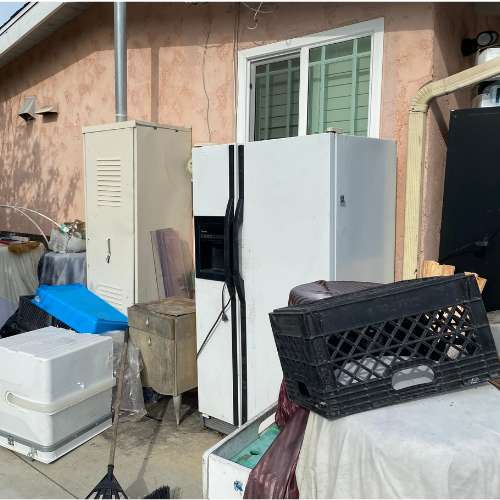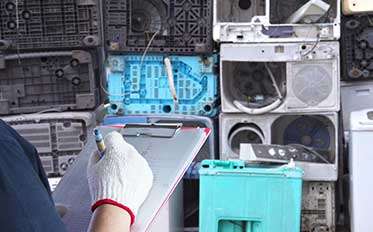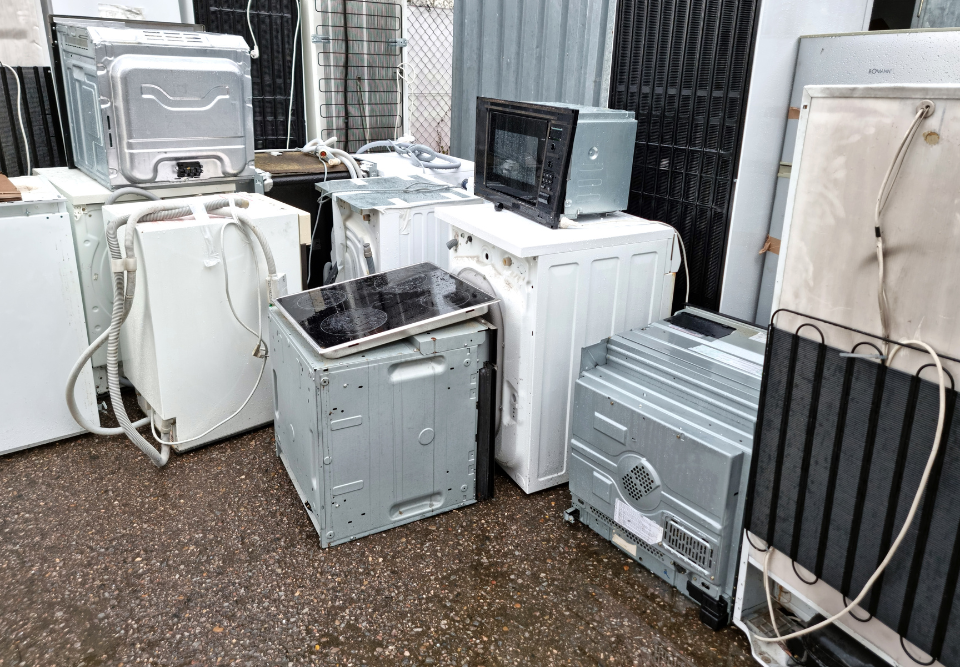
Junk Removal Santa Rosa for Clutter-Free Homes and Yards
August 5, 2025
The Best Practices for Safe and Efficient Furniture Removal
August 5, 2025Tips for Proper Appliance Removal and Disposal
Appliance removal is a task that requires careful planning and attention to detail. Large household items like refrigerators, washing machines, dryers, and ovens can be deceptively heavy and awkward to maneuver. Attempting to move these appliances without preparation can result in personal injury, damage to flooring, or broken household items. Understanding the weight distribution, dimensions, and removable parts of each appliance is essential before attempting any move. Clearing a path from the appliance’s location to the transport vehicle or storage area can prevent accidents and make the process much smoother.
The tools you use play a significant role in safe handling. Equipment such as dollies, lifting straps, heavy-duty gloves, and protective footwear can make all the difference when moving cumbersome appliances. Having a clear strategy for lifting and moving items, whether alone or with help, reduces the risk of back strain or accidental drops. Paying attention to small details, such as securing doors and covering sharp edges, adds an extra layer of safety.
Check Local Regulations and Recycling Guidelines
Appliances contain components that may be harmful to the environment if not disposed of correctly. Refrigerants, batteries, and heavy metals require proper handling to prevent environmental contamination. Understanding local regulations for disposal and recycling is crucial. Many cities provide specific programs, designated drop-off locations, or scheduled pickup services for these items. Complying with local guidelines ensures you avoid fines while also contributing to environmental sustainability.
Recycling guidelines can vary widely, making it important to research your municipality’s requirements. Some areas provide free recycling options for certain appliances, while others may charge a small fee for collection. Separating recyclable components like metals, plastics, and electronics from non-recyclable parts simplifies the recycling process and reduces the strain on landfills. Preparing appliances by dismantling or organizing them according to recycling categories saves time and promotes environmentally responsible disposal. Staying proactive in understanding your region’s recycling policies allows for a more organized and conscientious appliance removal experience.

Disconnect and Prepare Appliances Properly
Before moving any appliance, it is essential to disconnect it from power, water, or gas sources to avoid hazards. Refrigerators, freezers, and ice machines should be completely emptied and cleaned to prevent leaks and unpleasant odors during transport. Washing machines and dishwashers need their hoses detached and drained to minimize spills, while stoves may require gas line disconnection to ensure safety. Taking these steps in advance reduces the risk of accidents and makes the entire removal process more organized and efficient.
Small adjustments like draining residual water or removing detachable shelves, trays, and drawers may seem minor, but they significantly contribute to a safer handling experience. Ignoring these steps can result in costly damage, safety risks, and unnecessary stress. Preparing appliances thoughtfully ensures they are easier to lift, transport, and dispose of. Whether handling the appliances yourself or working with professionals, a thorough preparation phase creates a controlled, hazard-free environment that reduces surprises during removal.
Plan Transportation and Lifting Techniques
Appliance removal involves careful consideration of transportation methods. Bulky appliances must be loaded securely into trucks or trailers to prevent shifting, which could damage the items or your vehicle. Proper lifting techniques are critical; bending at the knees, keeping your back straight, and lifting in coordinated movements helps prevent injuries. For particularly heavy or awkward items, enlisting help ensures balance, stability, and control. Planning these details in advance minimizes physical strain and potential accidents.
Selecting the appropriate vehicle and arranging a safe loading system is just as important as proper lifting. Floors and walls should be protected with padding or blankets to prevent scratches or dents. Strategically placing appliances to avoid shifting during transit ensures a safer journey and reduces the risk of damage. Investing time in planning transportation not only improves safety but also streamlines the process, making it less stressful and more efficient. A careful approach ensures appliances reach their destination intact and ready for responsible disposal.
Consider Professional Appliance Removal Services
In many situations, hiring professional appliance removal services offers the safest and most efficient solution. Experienced teams are equipped with specialized tools, vehicles, and techniques to handle heavy, awkward, or delicate items without incident. They are also knowledgeable about proper disposal channels, ensuring appliances are recycled or discarded according to local regulations. Relying on professionals reduces the physical burden on homeowners while guaranteeing that the removal process follows legal and environmental guidelines.
Professional services often provide insurance, adding peace of mind in case of accidental damage. These teams can also handle multiple appliances at once, saving time and energy. Professionals are trained to navigate narrow doorways, stairs, and tight corners, making the removal process safer for everyone involved. Hiring a reliable team streamlines appliance removal, minimizes risk, and ensures that your home remains clean and hazard-free while items are disposed of responsibly.
Separate Reusable and Hazardous Components
Appliances often include materials that are reusable, recyclable, or require special attention due to hazardous content. Metals, electronics, and certain plastics can often be separated and sent to specialized recycling facilities. Identifying which components have value for recycling reduces waste and promotes sustainability. Taking time to sort items before removal ensures that valuable materials are properly repurposed.
Hazardous substances such as refrigerants, batteries, and electronic components must be handled carefully. Professionals or certified disposal centers can safely manage these materials to prevent environmental harm. By separating reusable and hazardous components before transport, you streamline the removal process and support eco-friendly practices. Thoughtful sorting ensures that items are disposed of safely and responsibly, benefiting both the planet and your household.
Timing Your Appliance Removal Efficiently
Choosing the right time to remove appliances can transform what might seem like a daunting chore into a smoother, safer process. Lifting and transporting heavy appliances during the cooler parts of the day, such as early morning or late afternoon, helps minimize physical strain and fatigue. This is especially important during warmer months when heat can quickly sap energy and increase the risk of dehydration or overheating. Planning removals for quieter periods, when fewer vehicles or people are around, also reduces the potential for accidents or delays, whether you are navigating tight outdoor spaces or moving items to a truck or storage area.
In addition, scheduling ahead improves coordination with recycling centers, donation programs, or municipal disposal services. Appliances that sit unused for long periods can clutter your home, create hazards, and even lead to accidental damage. By aligning removal times with service availability, you ensure that appliances are disposed of efficiently and responsibly. Planning in advance allows for better resource management, smoother logistics, and a more organized approach overall.
Ensure Safe Storage Before Disposal
Not every appliance can be removed immediately, which sometimes requires temporary storage. During this time, it is crucial to place items in secure, stable locations to prevent tipping, leaks, or damage to surrounding surfaces. Uneven floors, cluttered spaces, or cramped corners can increase the risk of accidents, so taking the time to organize your storage area is essential. Ensuring pathways are clear around stored items provides safe access for later transport, while keeping appliances out of the way minimizes the chance of injury or property damage.
Covering appliances protects them from dust, moisture, pests, and general wear and tear. Maintaining proper storage conditions helps preserve the integrity of the appliances, ensuring they remain suitable for recycling, donation, or eventual disposal. Appliances that are kept in good condition during temporary storage are easier and safer to move, reducing the effort required during the final removal phase. By taking these precautions, you can create a seamless transition from storage to disposal, maintain a safer environment within your home, and prevent unnecessary frustration or damage during appliance removal.
Educate Yourself About Environmental Impact
Appliance disposal carries significant environmental consequences if handled improperly. Many appliances contain chemicals, heavy metals, and other substances that can pollute the soil, air, and water if sent to landfills. Understanding how different appliances affect the environment encourages responsible removal practices and ensures that waste is managed thoughtfully. By considering eco-friendly disposal options, you can take meaningful steps to reduce pollution, conserve resources, and contribute to a healthier planet while clearing space in your home efficiently.
Recycling programs, donation initiatives, and specialized disposal services offer alternatives to simply discarding old appliances. By learning the environmental impact of different disposal methods, you can make decisions that balance convenience with sustainability. Separating recyclable materials such as metals, plastics, and electronic components helps reduce landfill waste, while donating usable items supports local communities.
Handle Unexpected Challenges Calmly
Appliance removal rarely goes exactly as planned, and unexpected challenges often arise. Narrow doorways, awkwardly shaped appliances, or unforeseen obstructions can complicate even the most carefully laid plans. Maintaining a calm, patient, and flexible mindset allows you to adapt to these obstacles without panic. Creative problem-solving, careful assessment, and thoughtful adjustments ensure that appliances are moved safely and efficiently, even under challenging circumstances.
Being prepared with extra tools, protective padding, and a support team can make a significant difference when issues arise. Simple measures like blankets for floor protection, straps for secure lifting, or additional hands for balance can prevent damage and injury. Staying composed allows you to respond effectively to unplanned situations and keeps the process on track.
Conclusion
Proper appliance removal and disposal involves careful planning, attention to detail, and safety awareness. From understanding the weight and structure of appliances to following local disposal regulations and practicing eco-friendly habits, each step plays a critical role in ensuring a safe and organized process. Thoughtful preparation, efficient timing, and safe lifting techniques reduce the risk of injuries while keeping your home free of clutter. Combining these steps with conscientious environmental practices enhances the overall value of appliance removal and supports sustainable living.
For those who prefer professional help, North Bay Junk Removal in Santa Rosa, CA offers comprehensive appliance and junk removal solutions. Their experienced team ensures heavy appliances are handled safely, transported securely, and disposed of according to local regulations. Offering reliable, efficient, and environmentally conscious services, North Bay Junk Removal provides peace of mind and helps maintain a clean, safe home environment. Call 707-478-6817 today for expert junk removal that makes your home safer and clutter-free.




